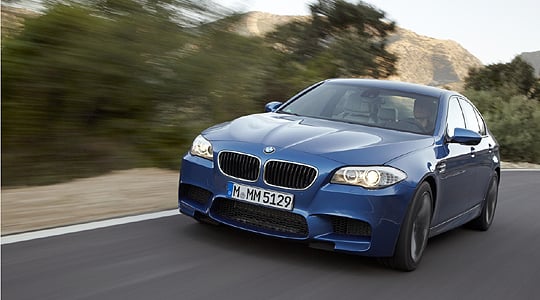
Even BMW's M-cars have to move with the times, writes John Simister. Few will want to buy a new M5 unless it can be made at least slightly tax-friendly, so the madly-revving V10 of the previous generation has no place in M5 Version 5.0. No longer can the engine be a racetrack fugitive with a throttle-valve for each cylinder; mainstream road-car rules must apply. Up to a point.
Yet the new M5 has more power – 560bhp, up by about 10 per cent – than the last one, despite a smaller capacity (4.4 litres against 5.0), two fewer cylinders (only eight) and a massively lower CO2 output (232g/km against 357). How can this be?
Because it is turbocharged, as all future BMW M-cars will be. The M5 has two of them, cleverly positioned in the valley between the V8's cylinder banks whence the exhaust ports emerge. The inlet ports are on the outside of the vee, fed after the compressed intake air has passed via water-cooled intercoolers, one on the end of each bank so the intake tract is short. Don't assume that each turbo's blades are spun by exhaust gases purely from its own bank, however; each twin-scroll turbo is fed by two ports from each bank, the better to achieve even exhaust pulses and maximum spinning efficiency.
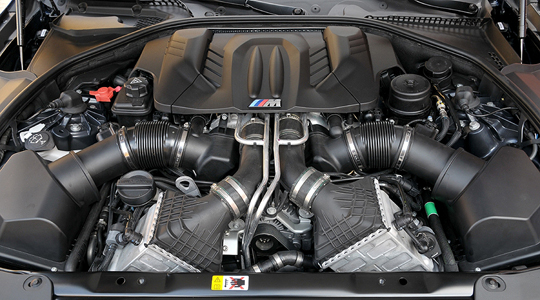
Please excuse the immediate immersion in technicalities, but as a piece of packaging this engine is a work of genius. That said, the same idea has already appeared in the V8 engine of the X5M and X6M, whose block the M5 shares. Not the cylinder heads, though, because the M5 gets Valvetronic valves and camshafts for maximum cam-lift variability. As usual, this variable lift acts as a throttling system, so this M-car has no separate throttle valves at all, rather than one per cylinder. Times change.
What matters, though, is not so much what it is as how well it works. The fact that maximum torque – 502lb ft of it – is available all the way from 1500 to 5750rpm tells you much of what you need to know about the latest M5. This onslaught of tractive effort gives the new M5 a character dramatically different from that of any M5 before it.
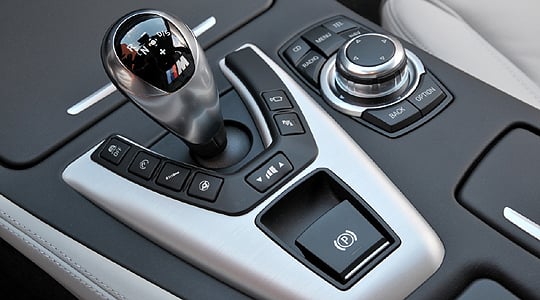
Set its engine and transmission calibration to 'efficient' (as in EfficientDynamics, the collection of BMW's fuel-saving engineering niceties designed to save fuel), its adaptive dampers to 'comfort' (in reality still quite firm) and its steering weighting also to 'comfort', and the M5 feels simply like an unusually rapid but otherwise recognisable 5-series. Set all three to 'Sport Plus', and click the seven-speed, double-clutch gearbox's shift speed up to the fastest of the three available settings (compared with six in the previous M5's surge-prone, single-clutch transmission) and suddenly you're driving a fire-breathing monster.
The accelerator becomes a torrent-controlling device. The suspension is tied down hard, probably too hard if the road has any meaningful humps and dips. Gearchanges become near-instant, sometimes accompanied by a clunk aft, often signalled by a pop from the exhaust. That pop becomes a deep bass flutter, almost a flatulence, if you simply decelerate from highish revs, while hard acceleration makes the M5 sound from the outside as though powered by a very powerful four-cylinder engine rather than a V8 with 90-degree firing intervals. That's the clever, turbo-optimised exhaust manifold talking.
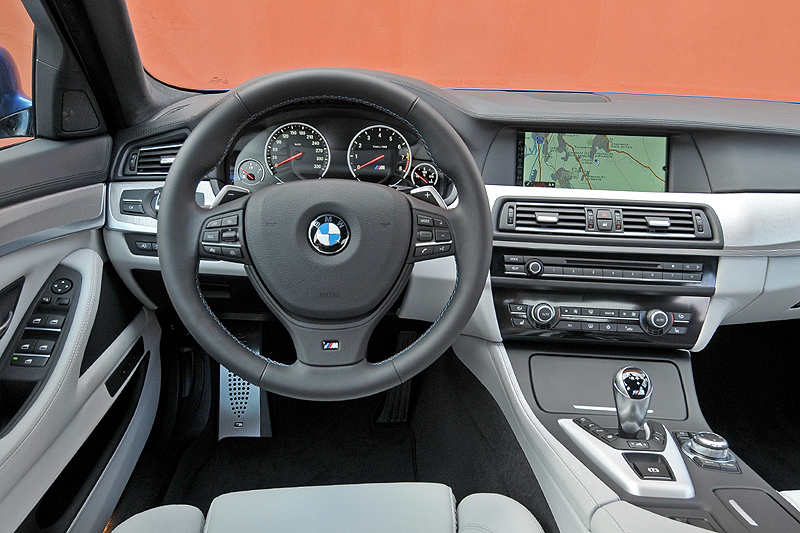
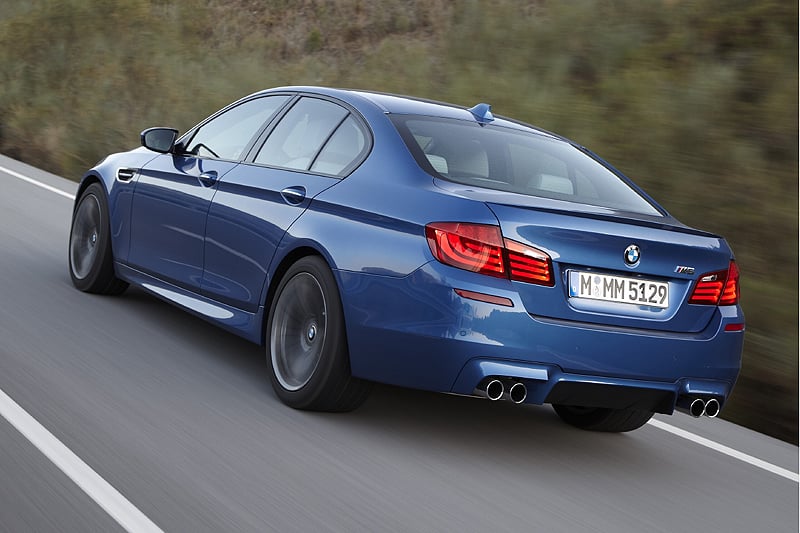
It is, of course, monstrously fast. An explosive getaway sees 62mph arriving in 4.4 seconds, and twice that speed in 13.0. The optional M Driver's Package allows a 190mph top speed. Even more extraordinary, though, is how accessible this pace is, with every gearchange beautifully executed and a torque delivery which means you seldom need to venture much above 4000rpm even though peak power is found on a plateau stretching from 6000 to 7000rpm.
The engine shrugs off the M5's considerable weight as though the earth has reduced its gravitational pull, but the need to steer through corners and slow the machine down makes you once again aware of the 1870kg mass. Yes, the M5 has plenty of aluminium in its external panels and its suspension components, but so does a regular 5-series from which just 20 per cent of components are used here in unmodified or unreplaced form.
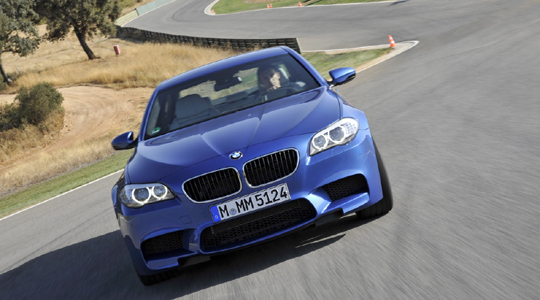
So you're on a twisting, mountainous road, with the suspension perhaps reined back into the intermediate, and slightly more fluent, 'sport' setting. Steering likewise, to reduce the effort on the forearms as bend follows bend but still to keep some solidity in the response. The engine can stay hyperactive; it's more fun that way. A fast entry into a slippery, dusty bend leads to a moment of uncertainty as the nose runs wide, but earlier braking and gentler turning-in makes for a tidier drive. The M5 rewards flow and doesn't like to be overdriven.
The best bit comes as you pass the bend's apex and accelerate to the exit. With delicious precision, helped by the engine's almost miraculous lack of turbo lag, the tail hunkers down and starts to drift gently wide, as much or as little as you like. It's easy, huge fun, achievable only if you have pressed the MDM (M Dynamic mode) button to stop the traction control from intervening too often, and partly the result of the M Differential's actions. This channels torque to the rear wheel better able to use it, rather than inhibiting the other one, so flow is maintained.
Steered on the accelerator in this way, the M5 becomes a responsive, wieldy machine helped by fast-geared, although rather heavily dead, steering. You sense that it would be quite an efficient devourer of a good racetrack.
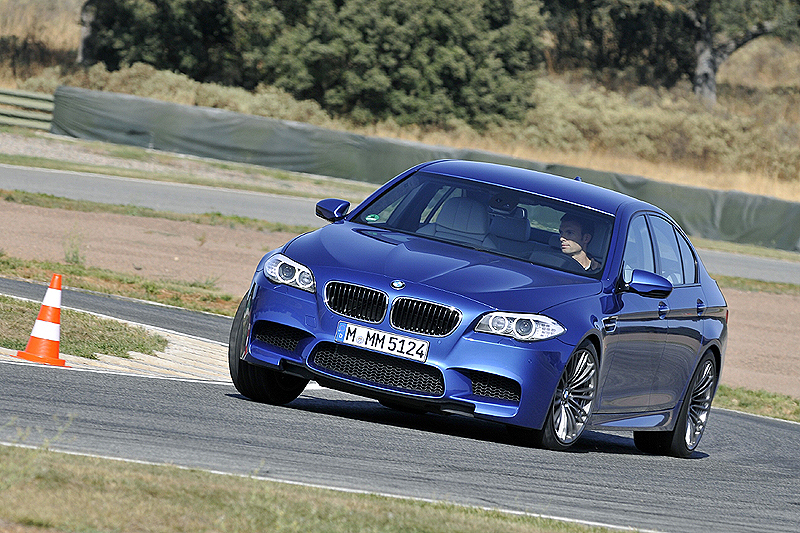
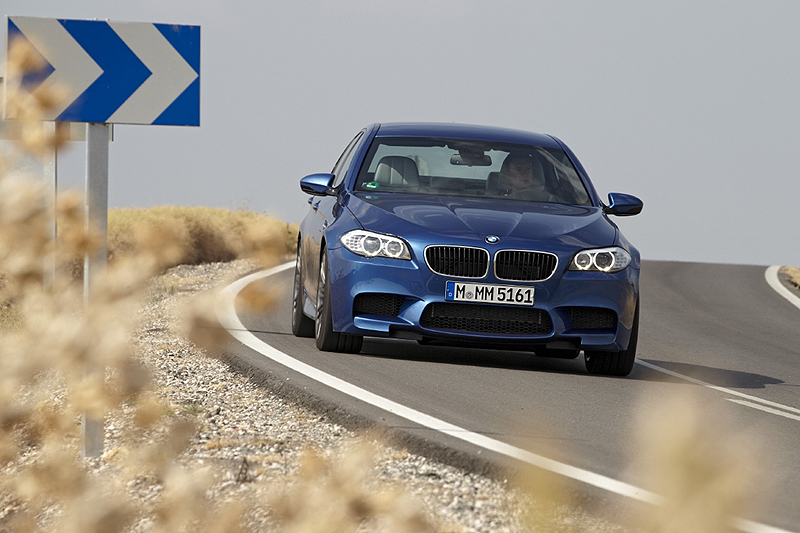
And so it proves, as the M5 and I venture onto the Ascari Autodrome's sweeping, three-dimensional bends, tight twists and brief straights. Here, 'Sport Plus' is best for every parameter, and more than ever you have to indulge in the gentle power-on neutrality-to-oversteer that is the M5's speciality. Go merely briskly into a corner and you feel the understeer build up, so what you need is more commitment as soon as you come off the powerful, but oddly spongy, brakes.
More power kills the understeer, just as it does on the road. But here you have the chance to play for higher stakes as you flick the M5 through a chicane with quick forearm movements to set the direction and a squeeze on the accelerator to finish the job, or you pile into a long, long bend and hold the huge, 295/35-section rear tyres on the edge of oversteer. Higher stakes? Well, the way you seem to be able to corner at ever higher speeds, simply by using the power to point the M5, must surely have a limit and you'll be going very quickly indeed when you find it. I didn't, fortunately, and for me the M5 stayed wholly benign. For a car to be simultaneously so fast and so unintimidating is a fine achievement.
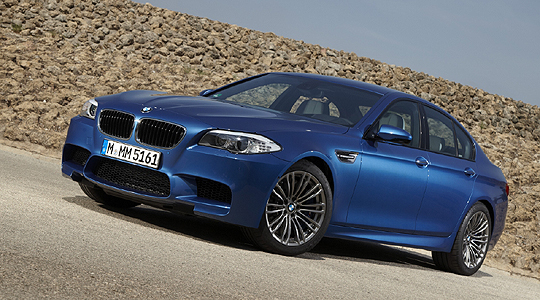
The price of this achievement is £73,040, which is more than you'd pay for a disappointing Audi RS5 or a thrilling Jaguar XFR, but less than the cost of a Mercedes-Benz E63 AMG. The M5 seems fairly priced, especially given the way it can adopt diverse personalities with complete conviction. It's a luxury car and a trackday weapon in one package, and frankly I'm awestruck.
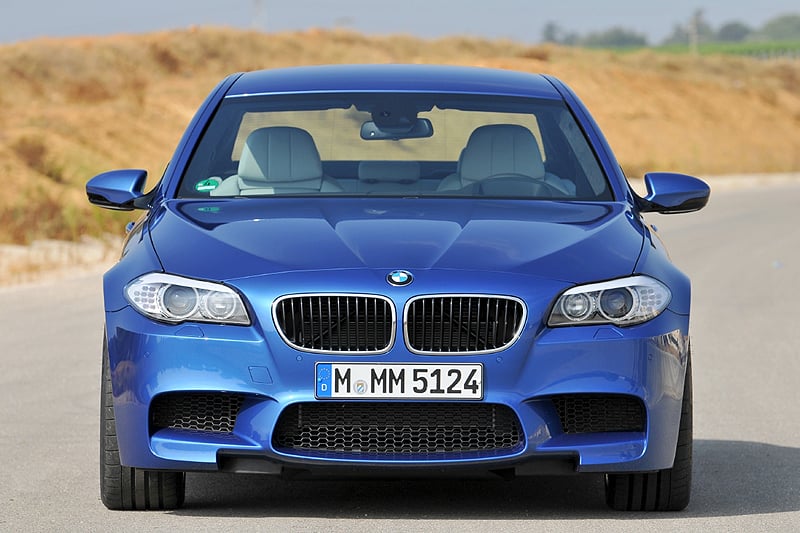
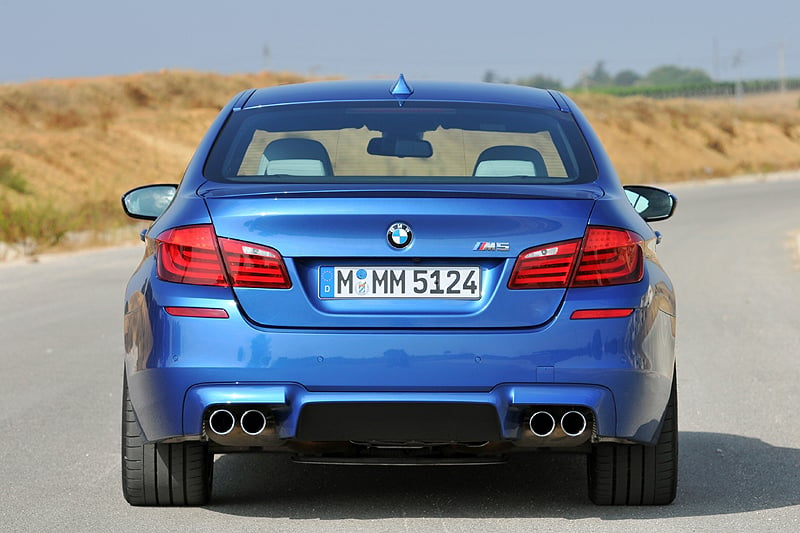
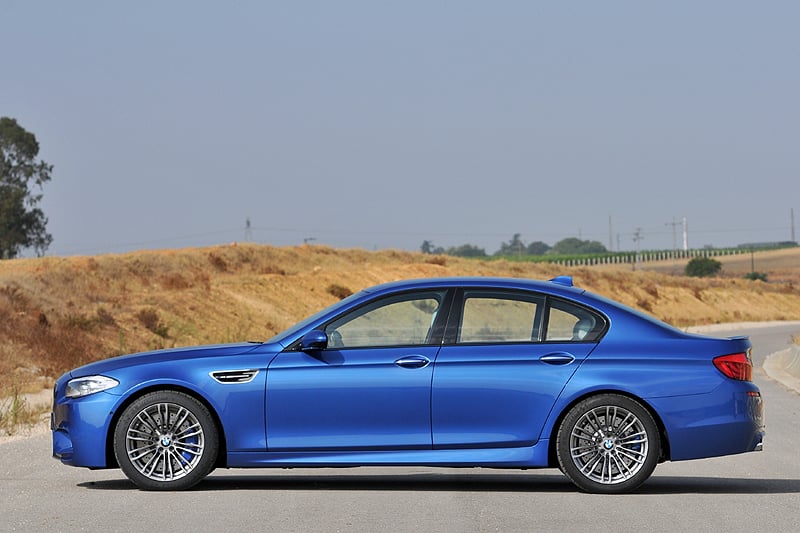
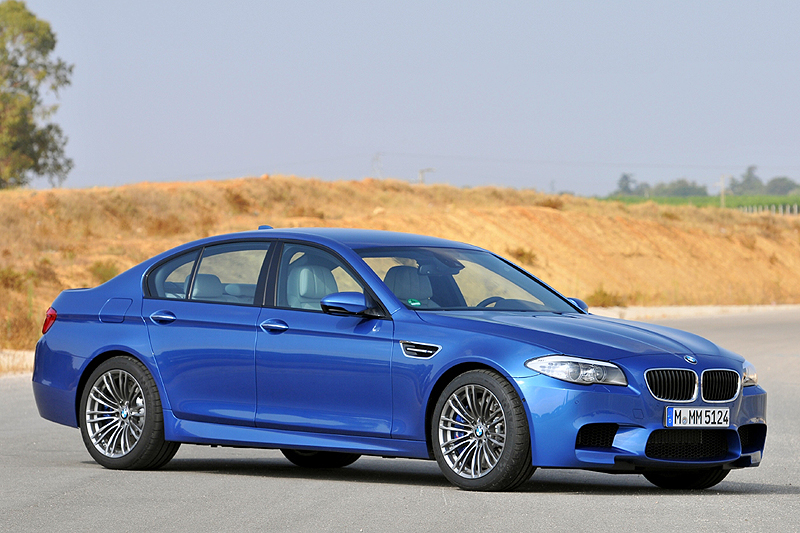

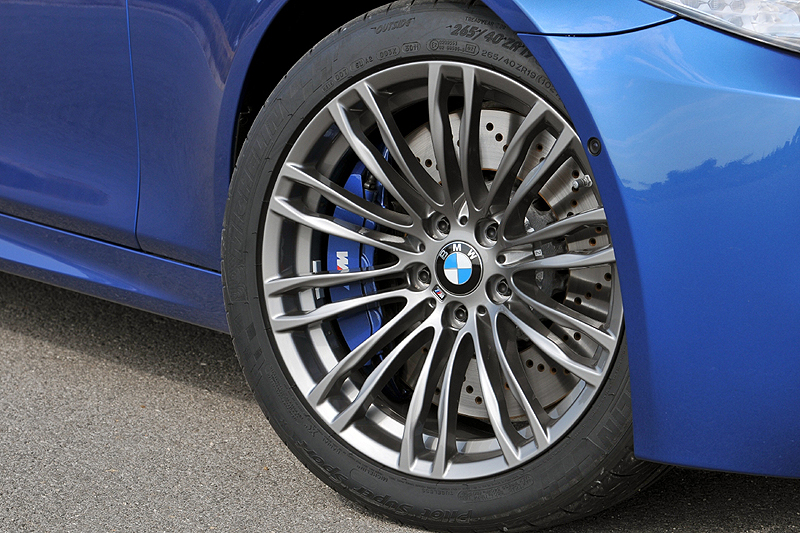
Text: John Simister
Photos: BMW
ClassicInside - The Classic Driver Newsletter
Free Subscription!















